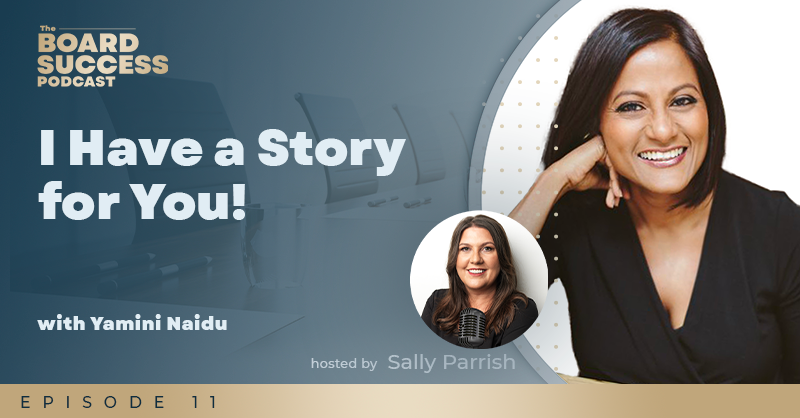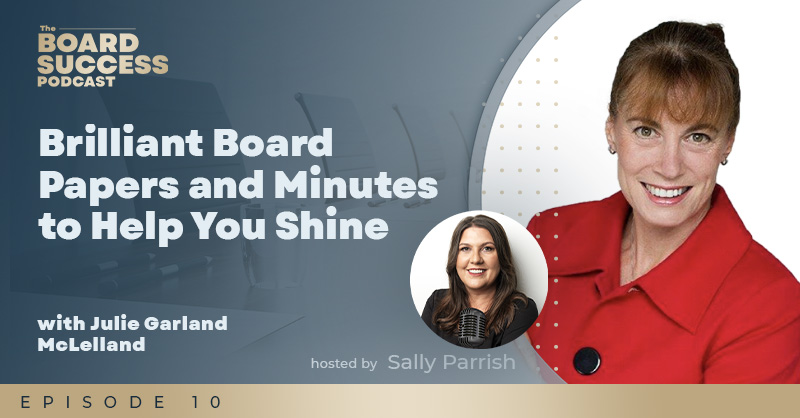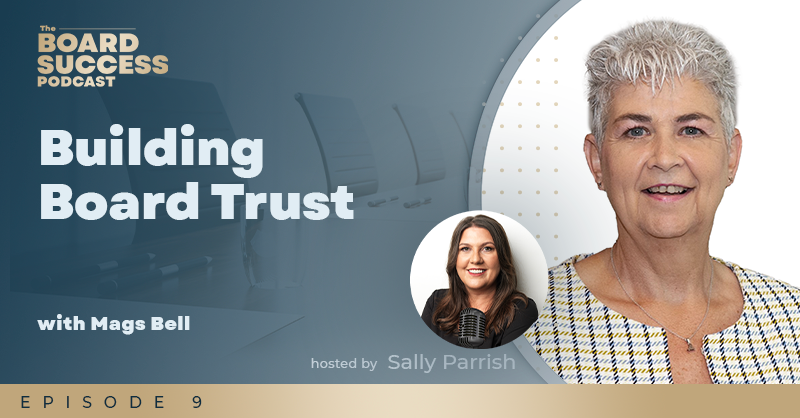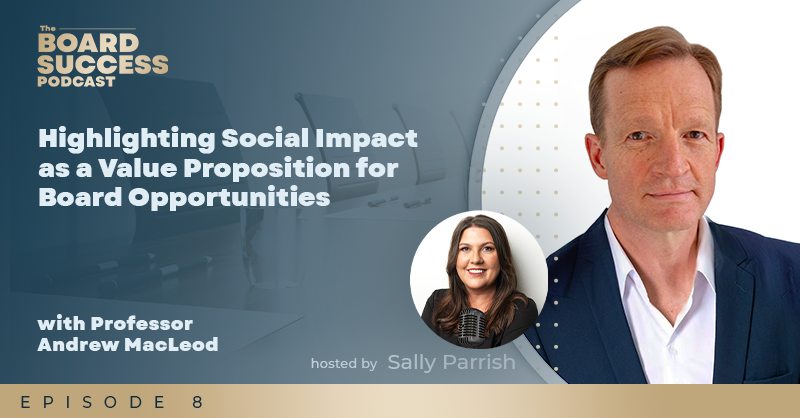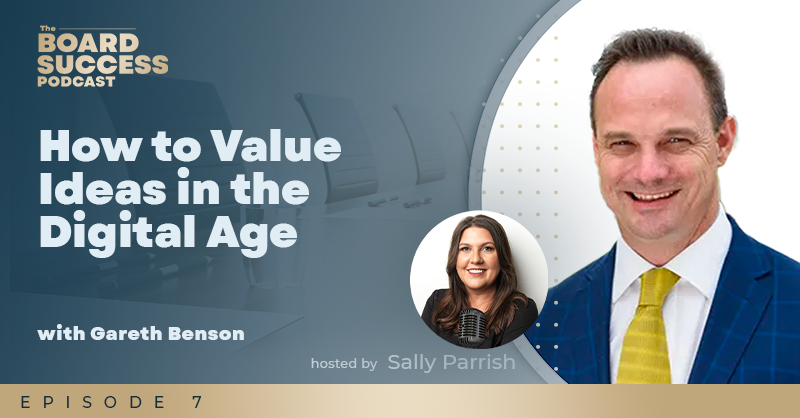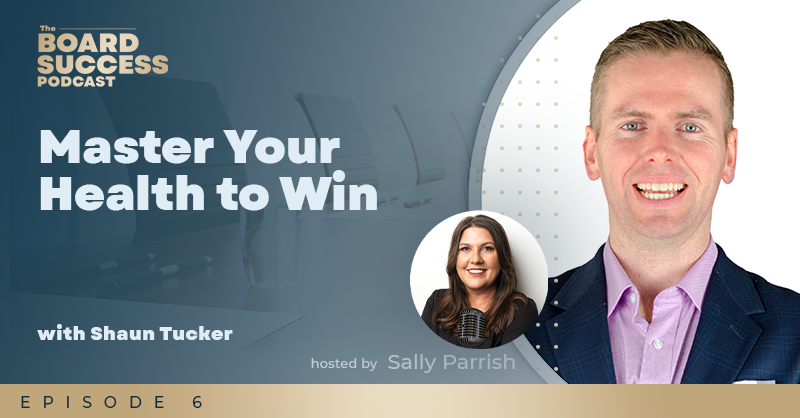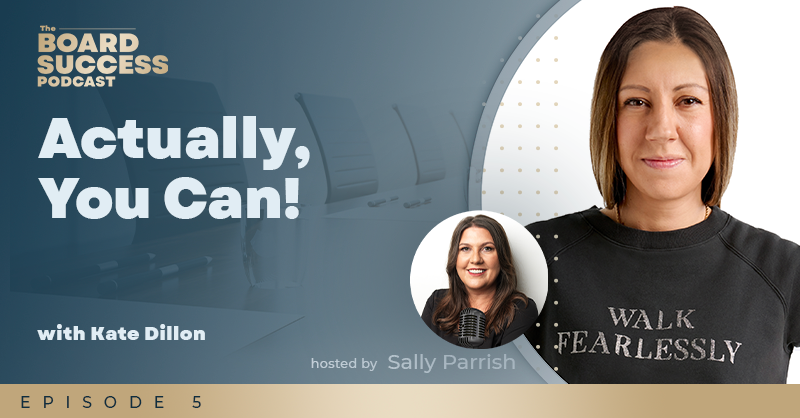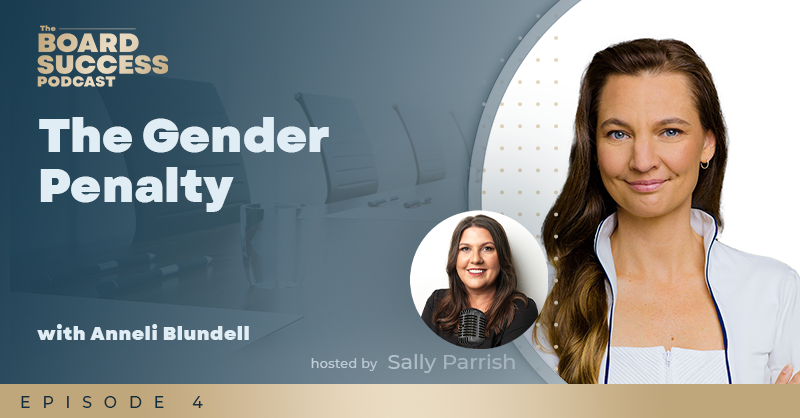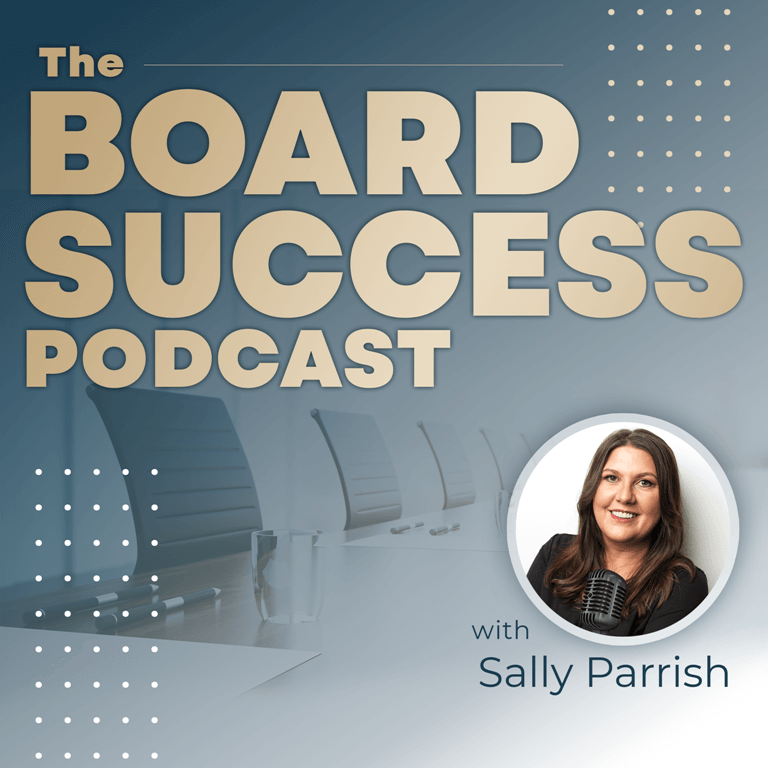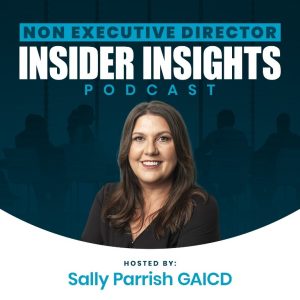An Interview with Martyn Lomax
Sally Parrish interviews Decision Making Expert Martyn Lomax
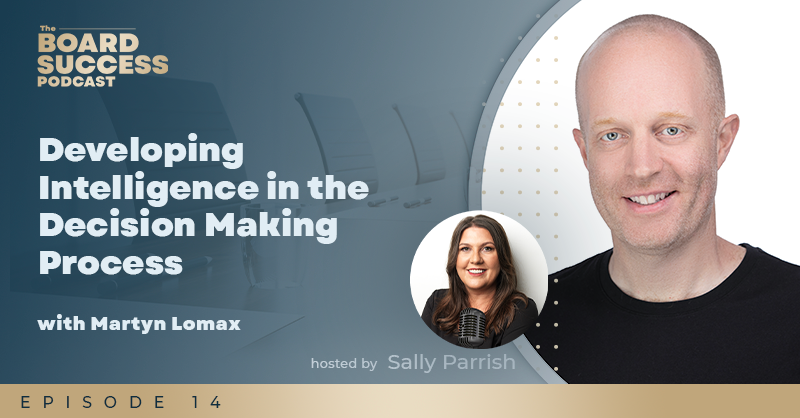
Fed up with bottlenecks and going around in circles in meetings, Martyn Lomax was determined to find a better process for group decision making. His research identified frameworks for streamlining the process and methods for embedding decision making into the culture of the business. Today, the resulting Janua software system is helping teams formalise and document the decision making process and in turn, creates powerful intelligence for the business.
In this episode we explore some of the traps of group decision making and how to make the process more efficient and effective. We also reflect on the board benefits from the business having a fully articulated process.
Martyn Lomax is a highly technical startup CEO, investor and early-stage startup mentor. With 15+ of experience in networking and security tech in large US firms, he then built, grew and successfully exited a B2B software startup in 2020.
Since then he has been investing in and mentoring startups in a range of industries. He has an eye for product design, infosec, software architecture scaling and building teams. In 2022 Martyn co-founded Janua with a focus on the world of Decision Intelligence and helping leaders empower teams to make better decisions.
FURTHER INFORMATION
Find Martyn on Linkedin: https://www.linkedin.com/in/martynlomax/
Free 3-Month Online Trial of the Janua software (limited to 10 users): https://www.janua.com/board
Click Here to View the Podcast Interview Transcript with Martyn Lomax
Martyn Lomax 00:00
One of the most important things you can do is to have a decision workflow process. And this gives you the best chance of making a good decision. The power of the decision register is, I think, a really underplayed thing of real intellectual property in your business of where, when you've done that analysis, recording what you've done, it's something that can be used in the future. There's a lot of work and time and energy that's gone into making a decision that can be forgotten in a year's time. So having that as something you can leverage in your business can really help with future decisions as well.
Sally Parrish 00:38
Hi, I'm Sally Parrish, Amazon, Best Selling Author of the essential Field Guide for company directors and founder of the board Coaching Institute. I've been in on and around boards for over 20 years. And if you like me are passionate about the boardroom, then this podcast is for you. And I'd love you to join me on this mission to decode board success. What is it that sets some non executive directors apart from the rest? How can you enhance your leadership skills, so you can be highly effective in the boardroom? And what will it take to make board success reality for you? I hope you enjoy these episodes as much as I love making them and that they unlock the secrets for you to gain a competitive advantage and have massive impact and influence in your board roles. Let's get started.
Sally Parrish 01:14
So today, I'm really excited to be talking about decision making and some of the traps and pitfalls around that. So joining us today is Martyn. Martyn, welcome to the podcast. Thanks for coming along today.
Martyn Lomax 01:55
Great to be here.
Sally Parrish 01:57
So Martyn, let's start off with a little bit about you and what you do and how you came to be in this decision making space as an expert.
Martyn Lomax 02:06
Yeah, thanks. Well, I'm Martyn Lomax. I love technology and I love solving problems. First part of my career I spent in IT and networking and vendor space. And then I founded a company in 2012. An IT focused software as a service company, which I exited in 2020. I am now co-founder and CEO of Janua, a decision making intelligence platform. And we're about empowering leaders to empower their teams to make better decisions. I came to this through the exit in my previous startup where we integrated my team of 12 into a 10,000 person organisation. And we went from a very agile team to a very team that was busy in meetings and going round and committee after committee, not getting any work done and not making any decisions. So as a bit of a problem solver, and a technologist, decided to apply some technology to that problem. And spent the last year deep diving into the whole world of decision making as the science and decision making workflows.
Sally Parrish 03:12
Oh, I love that. I love how you got so much structure around what is, I don't know, it's a topic that we just don't seem to have any sort of models or formulas for navigating right? From how do you choose what you're going to have in a restaurant, and I'm the worst one for this, spend two hours deciding what I want to eat and then choose something somebody else has decided they're having instead. But I mean, when that's applied in an organisational setting, you've got everybody's personal decision making styles, and then you've got the culture of the business. I guess the word is it just gets messy, right? It just gets really messy.
So let's have a look at decision making in the organisation. And then specifically decision making at board level. So fundamentally, what's the problem that your system Janua, what's the problem that it solves at a business level? How did this come about for you?
Martyn Lomax 04:19
Yeah, as I said, in describing the problem I faced in my company, being this agile team of 12, that went to a really slow and bureaucratic organisation. The problem was that projects that you would think would take a certain amount of time, the deadlines and the resources were blown out, because people couldn't get decisions made. And our projects are all about tasks. And you want to get your project done on time. But to complete those tasks, you need to make a lot of decisions. And if you think about it, a lot of what we do is discussing what we're going to do about a task or about some component of a project. And often people spend that time in meetings or on Zoom. And they often go around in circles, get to the top of the hour, haven't quite decided and it's put onto the hopefully an agenda for the meeting next week and the cycle continues. We saw projects that were due to be done in three months. And just one technology decision or a vendor selection decision, took two months and blew that project out. Because loads of other things were dependent on that one decision. So from a business perspective, I think we can reduce the impact on projects. And, there's a whole bunch of things we can talk about, in regards to the psychological and the performance side of decision making and the impact on employees and managers and what's going on inside your teams.
Sally Parrish 05:55
I love that. So we've broken this down into processes, the procedures of getting the decision made, but also the behaviours behind that process and how that can help or hinder the process. I guess a lot of the issues is that when it comes to making a decision, you're never actually in the situation where you've got all of the information you need, all of the decision makers and everybody there in that room, right? You start off with good intentions, we're going to decide today on X and it's not until we get in the room and we start really breaking down that topic that we realise we need more information, we need to consult other people, there's a knock on effect that we need to consider. And so it kind of sprawls out like a web. What we think is one decision actually ends up with five departments or having many decisions and conversations to actually have. And I guess it's hard to keep track of all of that and how it's progressing. And of course, everyone's the priority, right? I'm in the finance department. So it's really important that I have a say in this but actually in the legal department, it's really important that we have first say because if we don't….. So what are some of the issues that you see on the ground like that?
Martyn Lomax 07:13
Yeah, I think the issues are around, assigning the roles correctly, avoiding the biases, documenting decisions. And all these things, they really are helped, first of all, one of the most important things you can do is to have a decision workflow process. And this gives you the best chance of making a good decision. It's then going to flow on to making sure you have the right people involved, making sure everybody knows what their role is in the decision. We've all been to those meetings where everybody wants to have a say, or sometimes nobody wants to have a say, and that can be a problem as well. Everybody wants to be the decider, or maybe nobody wants to decide because of fear of putting their hand up and making a decision because of the implications for the business or the team. And the power of the decision register, as we call it, is a I think, a really underplayed thing of a real intellectual property in your business of where when you've done that analysis, recording what you've done, there's something that can be used in the future. There's a lot of work and time and energy that's gone into making a decision. And that can walk out the door, or it can be forgotten in a year's time. So having that as something that you can leverage in your business can really help with future decisions as well.
Sally Parrish 08:35
I bet there would be very few people listening today that have ever thought about a decision register. It’s not something that we see a ‘standard’ in a business. We see the incident register, the risk register, the asset register, but I'm not hearing the decision register. Is that something that you've come up with? Or is it something that's out there that's not utilised?
Martyn Lomax 08:59
Yet, it's really just, as you said, not very well known. As part of decision science and people who have implemented good decision workflows, the decision register is a key component of that. And if we work through the decision making workflow, when we get to the decision register, that's not the end, either. One of the other things that people forget to do is to come back and have a retrospective, maybe a post mortem, or a review. And if you've not documented your decision, how are you meant to do a review of any substance or accuracy? Because you need to know all those things of, what data did we have at the time we made the decision, who was involved. That's going to really help you understand what you could do better in your next decision. Or maybe there's a related decision where you know that a certain member of a team actually really showed that they were an expert in a certain field. Let's get them involved in this other decision, rather than just having the standard set of all of our team turns up to a meeting, and it's just a committee again. Let's start being a bit more structured and getting the right people involved at the right time.
Sally Parrish 10:14
And I really love that because businesses are guilty of flip flopping. We make a decision, we reverse that decision, we go back to the old way, then we go forward again and backwards again. And there are a lot of businesses where if you look at them, they constantly going between an A way of doing things and a B way of doing things and backwards and forwards. And I think it's easy to look back on a decision in hindsight and go, well that was dumb, or that didn't work, or that was rubbish. But if you haven't got that data around, why was that decision made, you can throw the baby out with the bathwater, right? In changing paths, you can overlook some of that critical information that was there, or some of the upsides of the decision that were made can be lost, as well.
I think when you see resignations on a grand scale, that's the danger in this right? When people walk out the door, they take all that history and logic and rationale with them. And the business is just left with a process or a way of doing things now that nobody really understands. Because the team that implemented that process has now left the business. And maybe that process is no longer relevant to business. How many things are there that we do in a business that we don't actually need to be doing anymore, it's just that we've always done things like this, right?
Martyn Lomax 11:40
And when you say about people leaving the business, I think, an example that strikes me is where you've got a business that has high compliance requirement. And you're going to look back on some decision that was made, maybe it's some financial thing, where you had to say that you did something with a technology decision to implement some new policy requirement, and how you came to that decision. That the person leaves the organisation, you've then got emails, Slack messages, what was said in a meeting. Those things disappear really easily and are hard to track back through. Whereas if you have something that is a compliance audit trail, then that can be really, really useful. And I think, as this is a board focus podcast, I think, one of the things there is, we want to have that, where the leadership can also show what they've been doing to the board, rather than between the board meetings we've just gone away and decided something - here is a structured workflow of deciding what we're going to look at on the decision, deciding the decisions, what's needed, making sure that we've got criteria specified, making sure we know who's going to do what in the decision, and then record it. And that's gonna be a great system to sort of take the weight off of the leadership team, it's going to make things flow a lot better.
Sally Parrish 13:07
And it actually enhances that communication between the board because the board gets to advise the leadership team what they want considered in that decision making process. So these are the factors that are really important. And that two ways the board get to have a look at how was that decision made within the business and Board needs oversight. And just having a recommendation made is never enough for a board, they always need to know the parameters around that decision that was made, as well. So actually having some sort of system or document or process where the board can peek inside, when they need to, noses in, paws out, but peek in and have a look at how was this made? Who was involved? What was the process? And I'm guessing having that sort of process, once you establish that, and once there's a culture of using it within the business, I'm guessing that this decision making process gets a lot quicker, a lot more smooth to do a lot more streamlined?
Martyn Lomax 14:07
That's right. And once you start with the culture, and you can have everybody talking the same language, you're talking the same types of roles of people who are going to be involved in the decision, then everybody is on the same page. You can say, you're the ‘Decision Manager’ on that. You're a ‘Contributor’ on that. And we've got to inform this person, could be a person on the board that you keep in a loop has an informed role in the decision. You've got the decision maker, and then also you've got an ‘Approver’ as well. And an approver, will get into this situation where there's some debate about whether there should be a single decision maker or whether there can be levels. In our opinion, best practice is to have a single decision maker, but the system of the workflow allows for approvers where you may have a legal requirement. So for example, should we expand to a new territory. And you may have the contribution to the analysis of the decision B, I need to get information from the HR team on what it's going to be like to hire in that new region, I may have to get information from the sales team about what the types of customers or the requirements around partnering or direct sales we need in that region. And then I may need input from legal on whether there are any tax legal implications about setting up and transacting in that region. So that can be a gate there for the approver. For all this contribution, I gathered it up, I make a recommendation, and the decision maker actually says yep, based on this information, the recommendation, we're going to go ahead and we record that in the register. So a nice simple workflow, and everyone is on the same page.
Sally Parrish 15:53
I love a system. I absolutely love a really good system or process to follow. But I love what you're saying. So you've got the decision manager, someone who's managing the process, you've got the ultimate decision decider, the decision maker, then you've got the approver of that decision. But I love the other two that you mentioned there, one was contributing, who's contributing to this decision that's being made. And I think we're really good at putting people in the room that have a contribution to make towards the decision. But the other thing you said there was, who needs to be informed, what we're not good at, is advising the rest of the business, hey, heads up, there's a project going on where we're going to decide on this. And what we're going to do is we're going to keep you copied in on the Minutes, no action required. But just so you know, what we're doing, because if there's a knock on impact, or something that that team needs to know, it comes during the process and not after the business has made the decision. And I think we've got to be really careful about not having too many people in a meeting, because that's damaging. But this is a really good way of just having parties to the decision making process in the room, but keeping others in the loop as well. So I love that you're involving the people that need to be informed as well.
Martyn Lomax 17:11
Yeah, absolutely. The point there about having the right people in the room, we definitely want to foster inclusion, want to make sure that we've got the right people in the room. And I love the example of if you have a team in a room, and you're asking for that contribution, that analysis input, and you've got somebody who's been in the team 10 years, very established, they're probably the most senior and highest paid person in the room versus a graduate, an intern. Do you want the most experienced person or do you want the fresh eyes and the person who's maybe looking at the newest technology? Maybe not the same as the person who's been more established and has all the experience but hasn’t looked into the newest technology? Who's going to put their hand up in the meeting room to contribute? And there's some studies on how you can get people to contribute more if you get them to write it on a Post-it note. So, I think there's some scope there to do some smart stuff with software to help avoid that kind of biases and groupthink, and the term I love is HIPPO, the highest paid person's opinion, is to really make sure that you're getting the best out of your team. You hire these people into your team, to do the work and to be experts and we want to get that out of them in the easiest way.
Sally Parrish 18:32
Yeah. And that takes us nicely into bias, right? Because we've got biases as individuals, as boards, as teams, departments. What's some of the common biases specific to decision making that you come across?
Martyn Lomax 18:51
Yeah, I think it really comes down to groupthink, as the biggest one. People generally tend to think in herds, having the right people involved to bring specific elements to a decision. As I said, you're getting the right contribution in a decision where you have an element, which is to do with HR and element which has to do with finance and technology. It's sort of similar to a jury situation where you have 12 people, and people can just follow along because it's just the easy thing to do.
Sally Parrish 19:23
And I think it's the right thing. If the other 11 people will think this and that must be the right answer. So I won't speak up. I won't give my opinion because my opinion must be wrong, because it's different to other people.
Martyn Lomax 19:34
Absolutely. Yeah. And then, there's a concept called bikeshedding, where there was a situation, the nuclear power plant thing and I think one of your previous guests mentioned this as well, where you spend more time on doing something which is less important, because your comfort zone basically. So in this case, they spent more time looking at a low cost low priority bikeshed plan than they did on compliance for their nuclear waste or whatever. So I think that's, I want to keep an eye on as well as just make sure you're focusing on the right thing. And that's where, clearly defining the decision and clearly defining the criteria, the outcomes and impact can be really helpful up front.
Sally Parrish 20:18
Yeah, I love that. Confirmation bias as well is a great one, right? We see proof of our opinion, and we can't see proof that disqualifies their opinions. So we're constantly validating our thoughts and our opinions based on only paying attention to the things that do validate those things.
So to what degree are you able to tackle biases in a process like this?
Martyn Lomax 20:46
I think the main thing is having clear roles and by naming those roles, and avoiding having everybody in the room is the first step to making sure that you're not doing committees, or you're not doing the groupthink. And having that definition upfront, removes that sort of ambiguity on what should we focus on.
Sally Parrish 21:11
So just want to make a distinction there, because we're not talking about the entity, the committee of management, what we're talking about here is the phrase for a group of people that sit around talking about things that aren't empowered to make decisions or don't have any clear roles. And those meetings just go on and on, because there's no kind of outcome to them, correct?
Martyn Lomax 21:36
Absolutely. And I think empowerment is a really important piece to this. And, it's in what we believe is our mission is to help leaders to empower teams. And this really starts at the top. It starts in having the culture set so we can empower teams. Coming back to the HIPPO, you imagine you're a leader in a business, do you want every decision coming to you for you to sign off on and having a workflow where you can have trust and empowerment in your teams to have them clearly Define what needs to be decided, do the analysis, come up with a recommendation and record it, means that maybe you're informed, but you don't need to be the bottleneck. And that can mean that you're more efficient as a business going forward.
Sally Parrish 22:21
I love that. I can see some huge benefits and advantages of having a system like your system, Janua in the business, or even just, a process that follows these kind of principles.
Let's talk about boards specifically, because what every board wants is the justification for how a decision was made. If ever it's going to go wrong, the court aren't interested in what was the decision. The court are interested in, how was this decision made? Or why was this decision made? So it's always around, what facts are available at the time, what did a reasonable person think at that time? On the one hand, having a system that clearly documents the information that was available, and who was involved in that decision making is winner winner, chicken dinner right? Where we got to be careful, is this is not privileged information. So this is clearly a system that the board can use as a tool for getting information from a business and also for, ensuring that the information that they're requesting is thoroughly thought out, well fleshed out, but not really a tool that a board is probably going to take on and start implementing and documenting the rationale for every decision made. But it's a really good tool for a board to understand, who do we want involved in this decision making process in the business? Who's the decision maker, who do we want contributing? With a view to getting recommendations back to the board for a decision that they'll make at a later time.
Martyn Lomax 24:05
Yeah, absolutely. I think you're right there. It's all about the definition of what was required at the time and we know at that point. And making sure that we're in a situation where we have that communication. The one thing I like to think about there is, that everybody's on the same page with the language as well. And it can be as simple as, we're going to talk about this in how we work with the exec team of how we're going to encourage the decision making culture and everybody's on the same page with language. The tool itself, you could do this and start with a spreadsheet as the decision register. So really it can be just as basic as that.
Sally Parrish 24:50
I really love that and I love that there are other benefits. So I'm thinking orientation, right? I'm a new exec manager to a company I can go through the decision register and really get an idea of how decisions are made, what decisions have been made recently? And how effective those decisions are. Were they long lasting, implemented decisions? Or were they decisions that got changed again in three months time? I think it's a really good tool for boards to peek into the workings of a business. How is this business operating? What's the culture internally? Not what does the exec team present to us at the board meeting, but the, the real true mechanics of how this is working at ground level, because that provides really great opportunities for the board to coach and mentor the business and personnel within the business, as well. But I think what I love most about it is how this can positively impact and reinforce great culture, because it's part of the culture of the business.
Martyn Lomax 25:58
Yeah, absolutely. And, that's my personal connection with this, I saw my team, going from being productive and agile and wanting to get in the trenches and do the work, then they spent all their time in meetings just going around in circles, I think that's one of the things that we want to encourage is people to be getting on with things. We maybe want to add a system or a process of workflow, to help encourage the right behaviour. And maybe there might be a small amount of friction there. But that friction can actually be a really good thing and back to the point you're making the friction can help us slow down, it can help us really take the time to define what we need to decide. And in the case of the board and the exec, that can be a really good thing of just having that process to define what is needed. And overall, even though we've introduced a system, that's going to have some small amount of friction, overall, we're going to reduce the time that we need to spend in those, as we said in quotes “committees” are going through these decisions that will see our project shorten. And that's where we want a decision that we make now, where we have the best data that we had at that time, is the best chance of making a good decision. And, we can always then adjust as we go. I'd hate to see that, we have all these projects that you've got this analysis paralysis, and you just burn through time and energy. And then the business is not efficient. That's something I think we can change.
Sally Parrish 27:32
Yeah, I love it. And it just goes round in circles, right? Because the information changes, the decision changes. If you got that clarity up front, everyone knows where they're heading and what's needed. I love that. We're going to talk about your system specifically in a moment. But you've got a great decision making resource for anyone that's listening today. Can you tell us quickly about that?
Martyn Lomax 27:53
Yes. So the Janua Decision Flow System, we'd like to offer for your listeners, three months for 10 users access to the system, as well as that, hand in hand is a free online decision workflow training course, a two hour online training course to go with that.
Sally Parrish 28:07
And that's complimentary, that training course?
Martyn Lomax 28:10
Absolutely
Sally Parrish 28:11
Amazing. And how can anyone listening get access to that free trial on the system? And that free online training course?
Martyn Lomax 28:25
Yeah, so we've got a special landing page. So we've got the website, janua.com. That's J A N U A.com/board. And fill out the details. And we'll help you get onto the system. And we'll help you get registered for the training course.
Sally Parrish 28:40
Brilliant. I'll put that in the show notes for anybody who's driving right now. So Janua, J A N U A.com/boards. Free two hour online training around decision making, and an opportunity to reach out to Martyn, have a chat about this system, and even get a free trial in your business for 10 users.
Martyn, thank you so much for joining us today. And that decision register. I'm just blown away by that. But I think we need a decision register in every single business.
Martyn Lomax 29:09
That's it. Fantastic.
Sally Parrish 29:13
I think #decisionregister for this episode. Thanks for joining us, Martyn.
Martyn Lomax 29:20
Thanks for having me.
Sally Parrish 29:21
Thanks very much for tuning in. I’d love to know what you thought of this episode and what you took away from it. I’d also love to know what topics you’re interested in hearing about in the future and which experts you think should be featured on this Board Success Podcast. If you enjoyed listening, please share with your colleagues who might also have an interest and make sure you click to follow or subscribe to be advised about upcoming episode. In the meantime, if you’re a leader or a successful executive, and you’re looking to launch your board career, or if you’re an established Non Exective Director and you’re ready for the next level, check out the resources we have available for you on the website at boardcoachinginstitute.com.au. Until next time, here’s to your board success.
Explore more episodes
